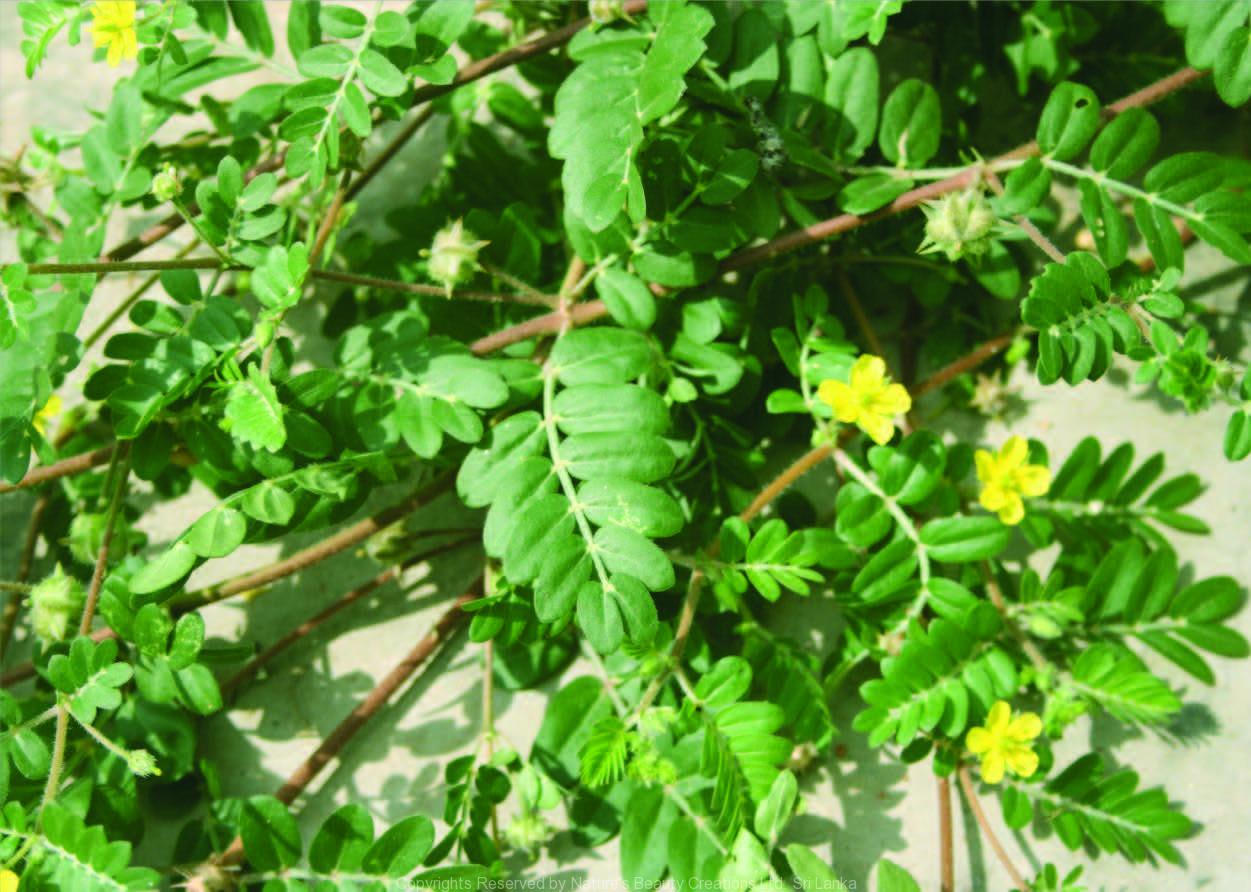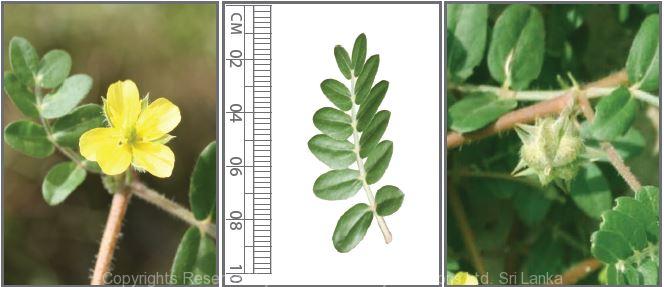

Traditional Knowledge
Useful plant parts :
Fruit and root
Uses in traditional medicine :
- Root infusion is taken for bladder stones
- Fresh fruits boiled in water with dried Cinnamon bark is used as a mouthwash for inflammation of the mouth
- Fruit is said to be diuretic and aphrodisiac
- Used as a tonic and an astringent in diarrhoea
- Used to treat cough, spermatorrhoea, scabies and ophthalmia
Scientific Research
Chemical constituents:
β-sitosterol-D-glucoside, flavonoid: kaempferol and its derivatives, flavonoid glucoside: tribuloside from fruits and leaves; steroidal saponins: protodiosc, tribulosin, 5,6-dihydroprotodioscin, neoprotodioscin and their respective sulfates, terrestrosin A–E, desglactotigonin, gitonin, desglucolanatigonin, tiyogenin from aerial parts
Bioactivity :
Tribulosin and β-sitosterol-D-glucoside: anthelmintic; methanol and aqueous extracts of plant: antihypertensive; dried fruit powder: aphrodisiac, increases testosterone level and sperm count; plant extract: hepatoprotective, antioxidative
Clinical:
Whole plant: effective in oligozoospermia; Plant together with Murraya koenigii is effective in benign prostatic hyperplasia
References : Bhutani, S. P. et al., (1969), Flavonoids of the fruits and leaves of Tribulus terrestris: Constitution of tribuloside, Phytochemistry, 8(1), 299–303. Combarieu, E. D. et al., (2003), Furostanol saponins from Tribulus terrestris, Fitoterapia, 74(6), 583–591. Deepak, M. et al., (2002), Tribulosin and β – sitosterol – D- glucose the antiheminthic priciples of Tribulus terrestris , Phytomedicine, 9, Gauthaman, K. et al., (2002), Aphrodisiac properties of Tribulus terrestris extacts (protodioscin) in normal and castrated rats, Life sciences, 71, 1385-1396. Gauthaman, K. et al., (2008), The hormonal effects of Tribulus terrestris and its role in the management of male erectile dysfuncton- an evalua- tion using primates, rabbit and rat, Phytomedicine, 15, 44-54. Phillips, O. A. et al., (2006), Antihypertensive and vasodilator effects of methanolic and aqueous extracts of Tribulus terrestris in rats, J Ethnopharmacol, 104(3), 351-5. Sellandi, T. M. et al., (2012), Clinical study of Tribulus terrestris Linn. in Oligozoospermia: A double blind study, Ayu, 33(3), 356-64. Sengupta, G. et al., (2011), Comparison of Murraya koenigii and Tribulus terrestris based oral formulation versus tamsulosin in the treatment of benign prostatic hyperplasia in men aged >50 years: a double-blind, double-dummy, randomized controlled trial, Clin Ther, 33(12), 1943-52. Singh, S. and Gupta, Y. K., (2011), Aphrodisiac activity of Tribulus terrestris Linn. In experimental models in rats, JMH, 8(1), 75-77. Ukani, M. D. et al., (1997), A review on the ayurvedic herb Tribulus terrestris L, Anc Sci Life, 17(2), 144–150. Yan, W. et al., (1996), Steroidal saponins from fruits of Tribulus terrestris, Phytochemistry, 42(5), 1417-22.
753-756.
Copyrights Reserved By
Natures Beauty Creations




